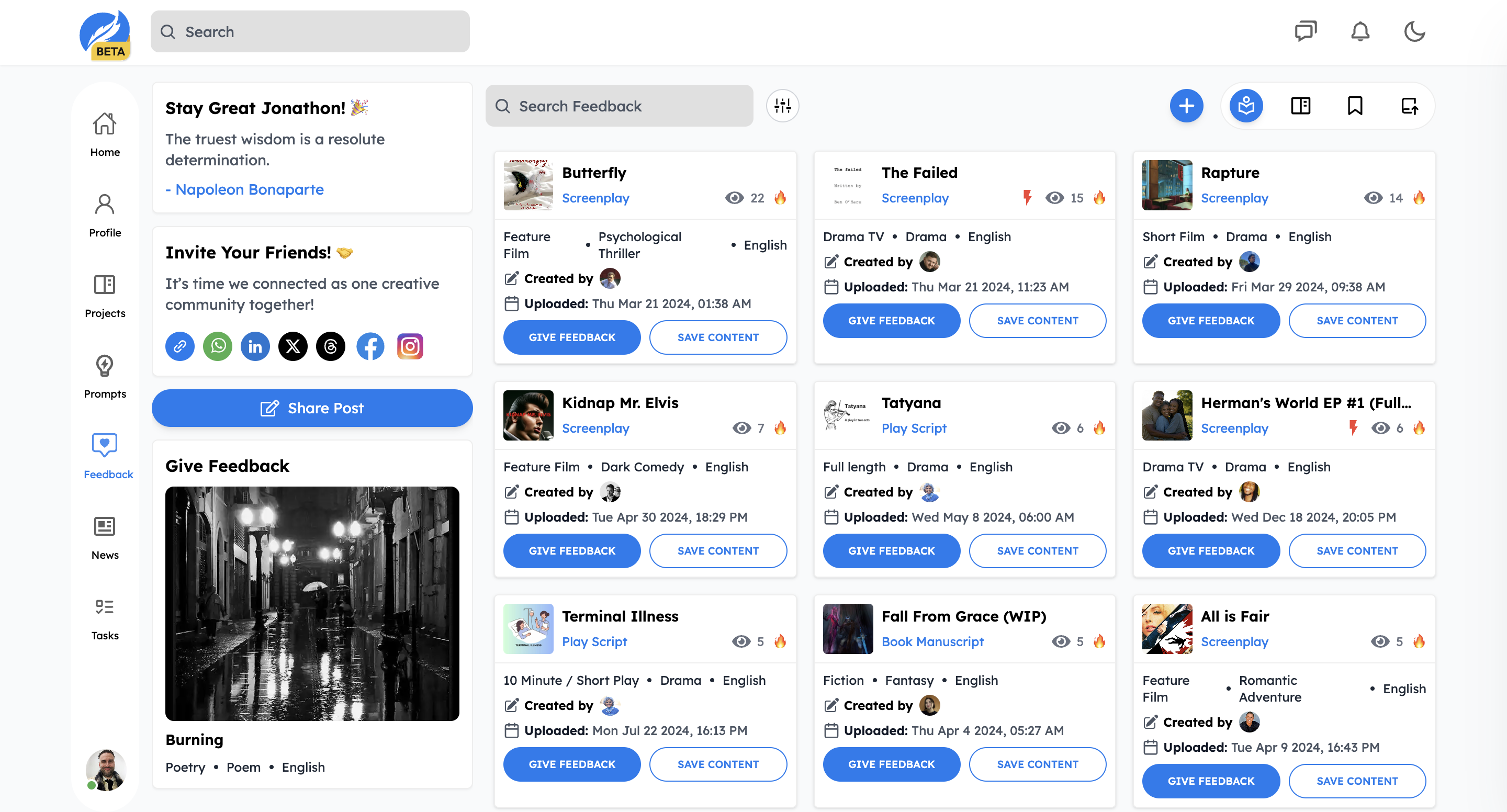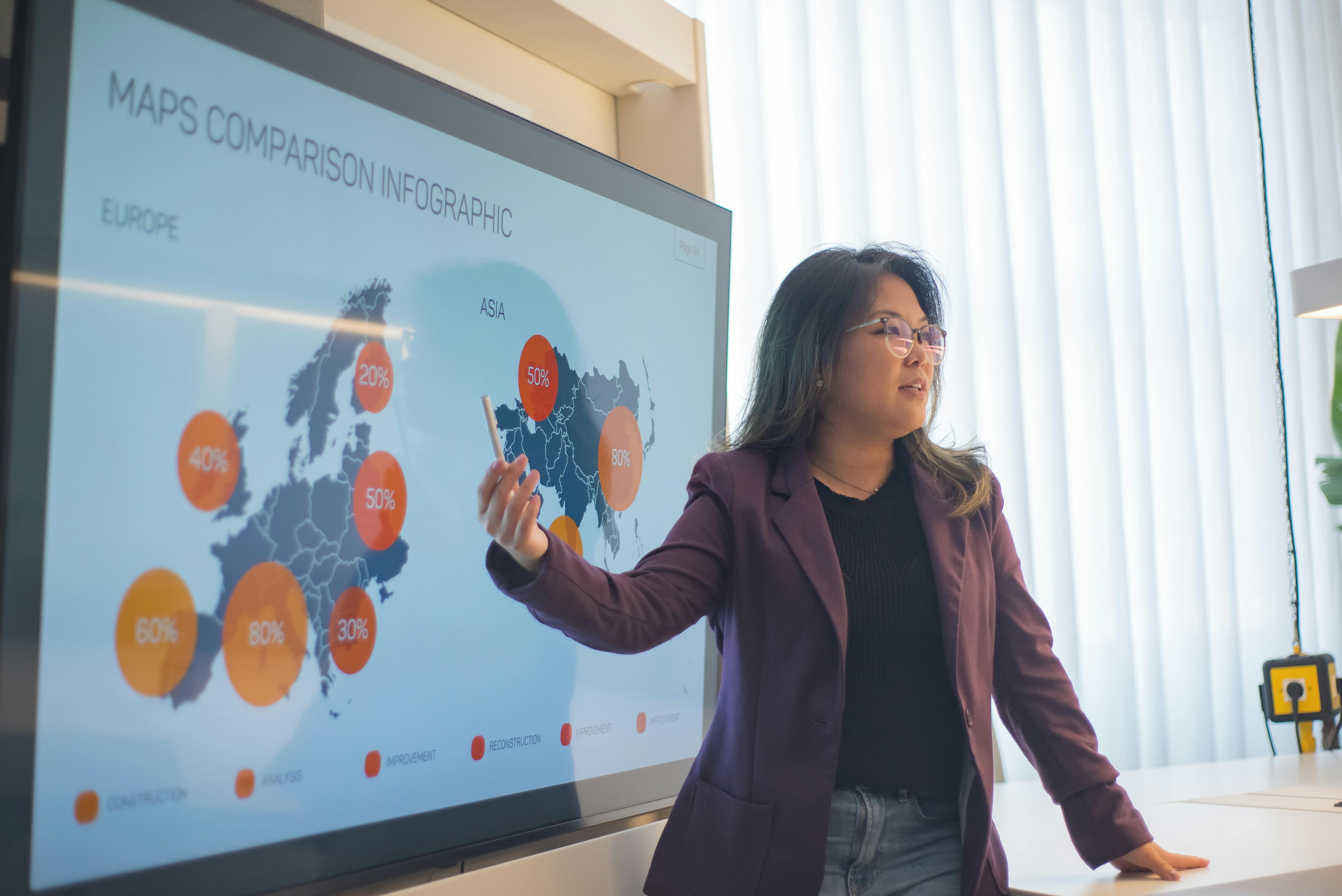What Is Multimedia Journalism and Why It Matters?
by WriteSeen
Multimedia journalism blends text, audio, video, graphics, and interactive elements to craft compelling stories for the digital age. This dynamic storytelling expands content reach across multiple platforms.
Today’s technology, from social media to virtual and augmented reality, constantly pushes these storytelling boundaries. Explore how multimedia journalism reshapes both engagement and creativity in the world of news and beyond.
The Evolution of Multimedia Journalism
Multimedia journalism has seen remarkable shifts from the days of traditional print and TV to today’s digital landscape. It's a journey fueled by technological advancements and changing consumer needs. Let's explore how these developments have shaped the way you, as a creator, engage with content and tell compelling stories.
Timeline of Key Developments
- Digital Cameras and Editing Tools: Gone are the days of analog constraints. With digital cameras and editing software, you gain more control over your storytelling tools, allowing for richer, more dynamic outputs.
- The Internet Revolution: The web has transformed information sharing. It's not just about reaching a wider audience—it's about connecting deeply with them. You can access and distribute information at an unprecedented scale.
- Social Media Platforms: They've redefined real-time engagement. Audiences expect interactive, immediate content. For you, it means finding creative ways to foster conversations and community through your stories.
- Emerging Technologies: From VR to AR, technology is expanding storytelling boundaries. Your opportunity lies in experimenting with immersive experiences. These aren’t just technologies; they’re tools to enhance viewer engagement.
The Role of WriteSeen
We help creators like you navigate these advancements by fostering collaboration through secure, timestamped storage and feedback systems. You're not just keeping up with industry evolutions—you’re part of them. As you engage with multimedia journalism, you’re also shaping its future.
Core Components of Multimedia Journalism
Understanding the core components of multimedia journalism can amplify how you craft your stories. It's about more than just adding layers; it's about combining them effectively to create an impact.
Key Elements to Master
- Text: This forms the backbone of multimedia storytelling. Crafting compelling narratives begins with strong writing skills. Make each word count to draw readers into your narrative.
- Audio: Whether it's interviews or sound effects, audio adds depth and emotion. It turns static images into dynamic experiences and engages audiences on another sensory level.
- Video: Visual storytelling captivates instantly. Use motion and emotion together to deliver stories that resonate with viewers in memorable ways.
- Graphics and Data Visualization: These take your storytelling to a visual realm, breaking down complex information into digestible chunks. They make data accessible without diluting its impact.
- Interactive Media: This is your toolkit for engaging viewers directly. By encouraging participation, you bring audiences into the narrative, allowing them to explore and connect personally.
Engaging and Connecting
Integrating these components strategically amplifies your storytelling power. At WriteSeen, we emphasize holistic creative approaches that enhance how creators develop and present their narratives.
The Skills Required for Multimedia Journalism
To excel in multimedia journalism, you need a blend of traditional and modern skills. It’s about merging creativity with technical know-how.
Essential Skills for Success
- Storytelling: Great multimedia projects start with strong storytelling. Keep narratives clear and compelling to maintain focus and direction. This skill unifies all other elements.
- Technical Proficiency: Familiarize yourself with tools like Adobe Premiere Pro for video editing and Audacity for audio work. Tech-savviness transforms ideas into finished products.
- SEO and Analytics: Optimizing content ensures your stories reach intended audiences. Use analytics to understand how audiences engage with your work, refining strategies for better impact.
- Data Visualization: Master tools like Tableau to convey complex messages simply and effectively, amplifying understanding and retention.
Empowering Through WriteSeen
We provide a distraction-free environment for creators to develop these skills. Through collaboration and feedback, you refine and expand your abilities, empowering your journey in multimedia storytelling.

Tools and Technologies in Multimedia Journalism
Navigating the landscape of multimedia journalism requires leveraging the right tools and technologies. They not only streamline your process but also enhance the quality of your output.
Essential Tools to Incorporate
- Canva and Adobe Illustrator: These are indispensable for creating visually arresting graphics. They simplify design processes, allowing you to focus on creativity rather than complexity.
- ArcGIS StoryMaps: This tool brings stories to life through immersive mapping, ideal for context-rich narratives that benefit from spatial elements.
- AI-Driven Solutions: Use AI for transcription and data processing to increase efficiency, giving you more time for creativity.
Integrating Technology
Incorporating these tools doesn’t just ease tasks—it transforms your capability as a creator. At WriteSeen, we encourage leveraging these technologies for innovative storytelling, ensuring that your narratives aren’t just consumed but experienced.
Challenges and Opportunities in Multimedia Journalism
In multimedia journalism, challenges meet opportunities. As a creator, navigating these intricacies can unlock new avenues for storytelling and audience engagement. Let's explore what these challenges mean for you and how they can transform into opportunities.
Current Challenges
- Content Saturation: The digital space is crowded. Breaking through the noise requires innovation and distinctiveness. But here's the upside—unique, well-crafted content stands out more than ever.
- Rapid Technological Changes: Keeping pace with tech innovations can be daunting. While it demands continuous learning, it also empowers you with cutting-edge tools that can enhance storytelling capabilities.
- Resource Constraints: Many creators face limited resources. Innovative use of available tools can maximize impact and efficiency without requiring significant investment.
Turning Challenges into Opportunities
- Target Niche Audiences: By honing in on specific niches, you engage with communities deeply interested in your content. This approach not only strengthens your reach but also builds loyal followings.
- Innovation through Technology: Embrace technologies like AI for dynamic content creation and VR/AR for immersive experiences. These tools offer new storytelling dimensions and increase audience interaction.
In the face of these challenges, WriteSeen is here to support your journey by providing a collaborative platform where you can explore, experiment, and expand your creative horizons.

The Role of Multimedia Journalism in Society
Multimedia journalism shapes societal awareness and promotes dialogue. It's not just about telling stories; it's about making an impact. Understanding this role can help you craft content that resonates and inspires.
Societal Influence
- Democratization of Information: By leveraging diverse media formats, multimedia journalism democratizes information, making it accessible to broader audiences.
- Enhanced Empathy and Understanding: Engaging multiple senses creates empathy and bridges gaps between different viewpoints. Your work can promote inclusive narratives.
- Stimulating Public Discourse: Interactive content invites audiences to participate in discussions, creating richer dialogues and deeper understanding.
Multimedia journalism is a powerful tool for change—harness it to drive societal impact and foster meaningful conversations.
Recognizing this impact helps you approach storytelling with intention and depth, driving real-world change through your creative work.
Case Studies of Effective Multimedia Journalism
Learning from successful multimedia journalism projects provides insights into best practices and innovative strategies. By understanding what works, you can enhance your own storytelling.
Notable Case Examples
- The New York Times' "Snow Fall": This project transformed long-form journalism through interactive visuals and storytelling. It's a masterclass in integrating multimedia elements seamlessly.
- The Guardian's "The Counted": With interactive maps and data, it sparked global discussions on pressing issues. It illustrates the power of data-driven journalism in engaging audiences.
- ProPublica's Data-Driven Stories: These utilize interactive tools to simplify complex data, empowering readers with knowledge and context. They demonstrate how to balance complexity with accessibility.
What We Learn
These projects show how multimedia journalism can elevate storytelling. By blending different media, they create immersive experiences that leave a lasting impact. At WriteSeen, we draw inspiration from such cases to empower our community of creators.

WriteSeen’s Contribution to Multimedia Journalism
At WriteSeen, we're passionate about supporting and fostering multimedia journalism. We aim to elevate your creativity and professional discovery by providing robust tools and a collaborative environment.
Our Approach
- Seamless Collaboration: We offer secure, easy-to-use project storage and peer feedback systems, enabling creators to collaborate effectively across disciplines.
- Purposeful Networking: Our platform connects you with a global network of creators and industry professionals, opening doors to new opportunities and meaningful partnerships.
- Empowering Ownership: You maintain full control over your work. We believe in empowering creators by ensuring you keep the rights and authenticity of your projects.
Our mission is to be a supportive partner in your creative journey. Join us to elevate your multimedia journalism pursuits in a thriving, innovative environment.
Conclusion
Multimedia journalism is evolving—presenting both challenges and opportunities for storytellers. It's about integrating various elements to create compelling narratives. As you engage with these ideas, remember that collaboration and adaptability are key. WriteSeen is here to support your growth as you embrace multimedia journalism’s full potential. Whether you're pushing boundaries or redefining narratives, you’re contributing to a dynamic industry that shapes our world.
TAGS